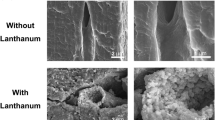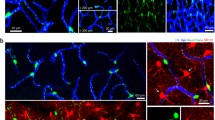Abstract.
Pial microvessels have commonly been used in studies of the blood-brain barrier because of their relative accessibility. To determine the validity of using the pial microvessel as a model system for the blood-brain barrier, we have extended the comparison of pial and cerebral microvessels at the molecular level by a partial characterization of the glycocalyx of pial endothelial cells, in view of the functional importance of anionic sites within the glycocalyx. Rat optic nerves were fixed by vascular perfusion. Anionic sites on the endothelium were labelled with cationic colloidal gold by means of post- and pre-embedding techniques. The effects of digestion of ultrathin sections on subsequent gold labelling was quantified following their treatment with a battery of enzymes. Biotinylated lectins, viz. wheat germ agglutinin and concanavalin A with streptavidin gold, were employed to identify specific saccharide residues. The results demonstrate that the luminal glycocalyx of pial microvessels is rich in sialic-acid-containing glycoproteins. Neuraminidase, which is specific for N-acetylneuraminic (sialic) acid, and papain (a protease with a wide specificity) significantly reduce cationic colloidal gold binding to the luminal endothelial cell plasma membrane. Wheat germ agglutinin (with an affinity for sialic acid) binds more to the luminal than abluminal plasma membrane, whereas concanavalin A, which binds mannose, binds more to the abluminal surface. Similar results have been obtained for cerebral cortical endothelial cells. With respect to these molecular characteristics, therefore, the pial and cortical microvessels appear to be the same. However, since the two vessel types differ in other respects, caution is urged regarding the use of pial microvessels to investigate the blood-brain barrier.
Similar content being viewed by others
Author information
Authors and Affiliations
Additional information
Received: 22 July 1996 / Accepted: 11 October 1996
Rights and permissions
About this article
Cite this article
Lawrenson, J., Reid, A. & Allt, G. Molecular characteristics of pial microvessels of the rat optic nerve. Can pial microvessels be used as a model for the blood-brain barrier?. Cell Tissue Res 288, 259–265 (1997). https://doi.org/10.1007/s004410050811
Issue Date:
DOI: https://doi.org/10.1007/s004410050811




